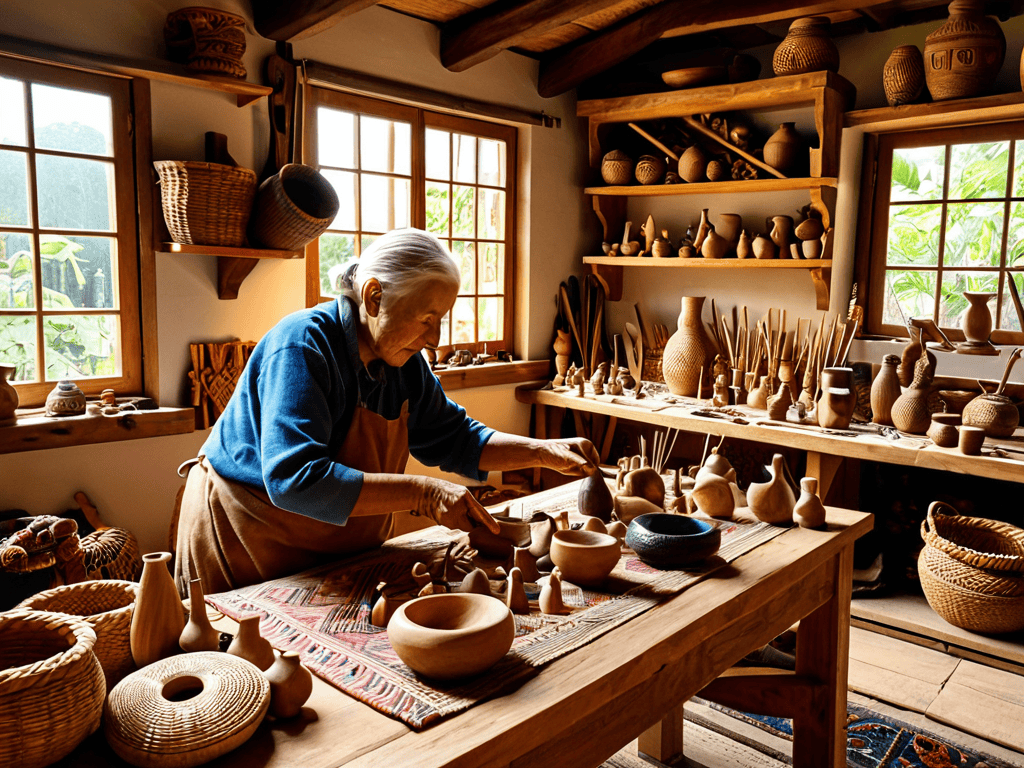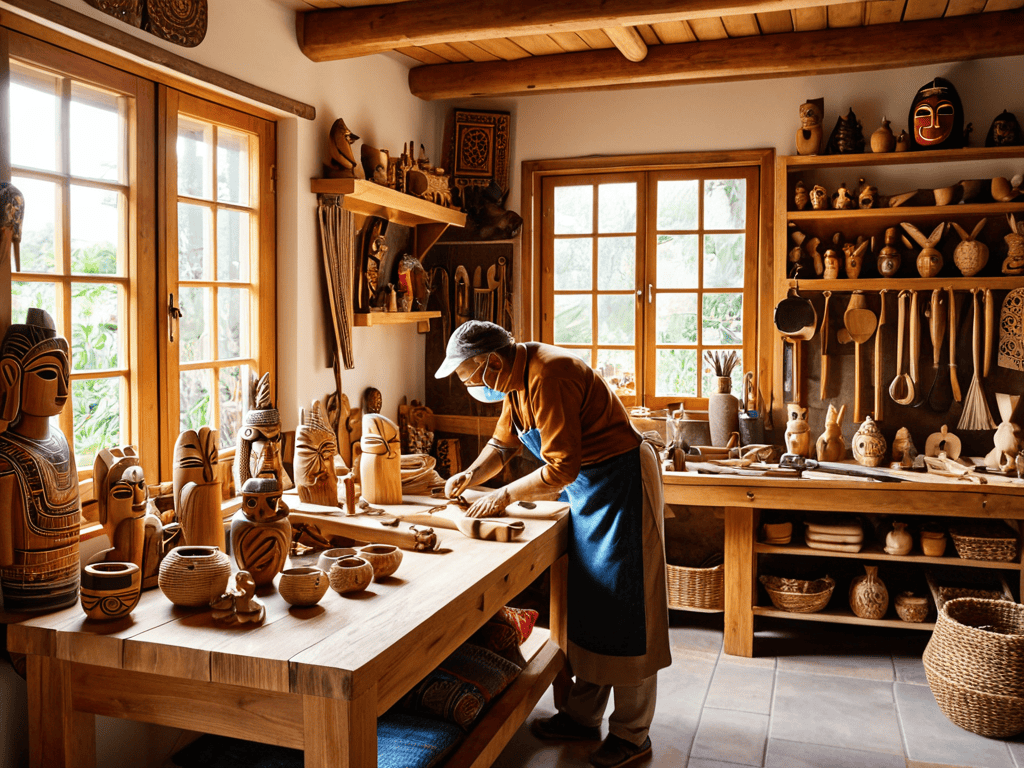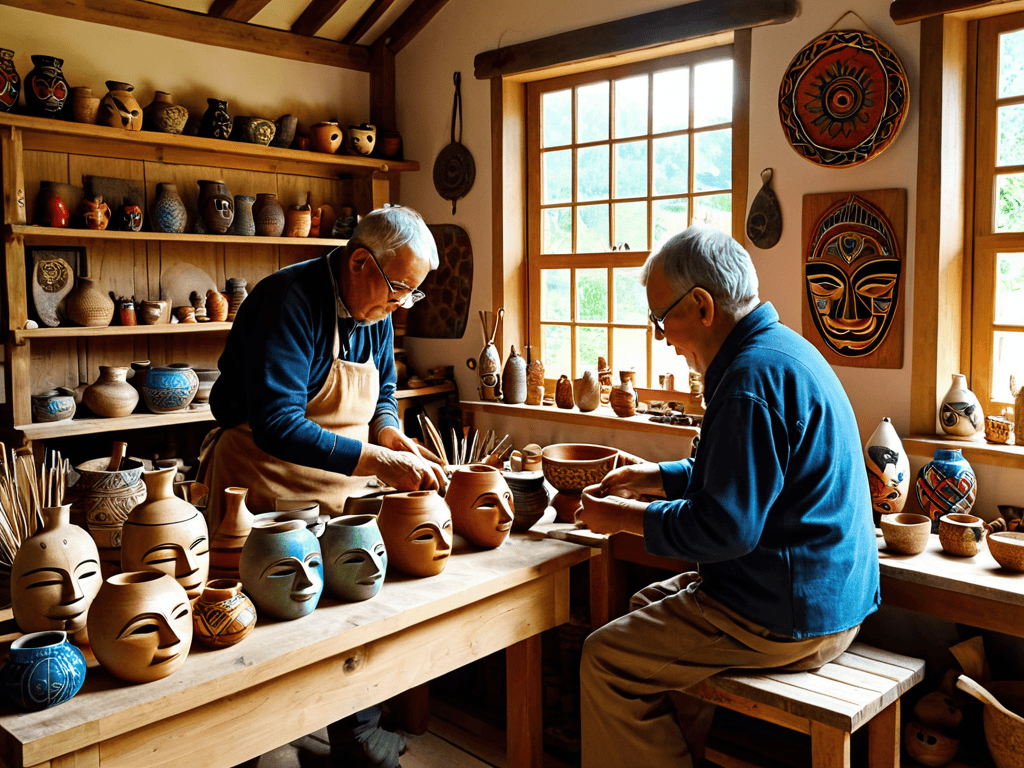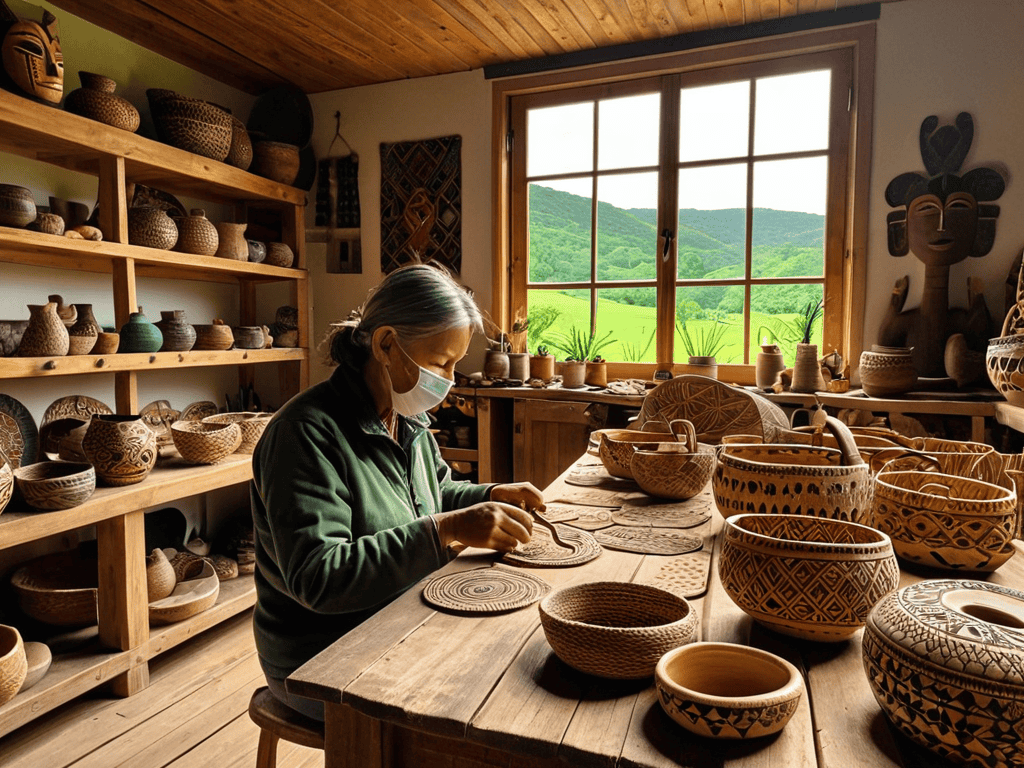I still remember the first time I stumbled upon a Folk art exhibition – the vibrant colors, the quirky patterns, and the sheer charm of the handmade crafts just drew me in. But what really struck me was how often people overcomplicate the concept of Folk art, turning it into something elitist and exclusive. I’ve seen many try to elevate it to a level of fine art, losing sight of its humble, community-driven roots. For me, Folk art is about embracing the imperfect, the whimsical, and the authentic.
As someone who’s passionate about Folk art, I want to share my experiences and insights with you, without the hype or pretension. In this article, I promise to provide you with practical advice and honest stories about the world of Folk art, from its history to its modern applications. I’ll take you through my favorite Folk art pieces, the artists who inspire me, and the techniques that make this art form so unique. My goal is to inspire you to appreciate the beauty of Folk art in its purest form, and maybe even encourage you to try your hand at creating some whimsical pieces of your own.
Table of Contents
Folk Art Treasures

As I delve into the world of traditional craft techniques, I’m struck by the sheer diversity of handmade decorative items that have been passed down through generations. From intricate wood carvings to vibrant textiles, each piece tells a story of cultural heritage preservation and the communities that created them. In rural artisan communities, these skills are still alive and well, with local craftsmen and women continuing to create stunning works of art that reflect their unique cultural identity.
One of the most fascinating aspects of these handmade treasures is the way they bring people together. I’ve had the chance to visit a few folk art museum exhibitions, and it’s amazing to see how these events celebrate the richness of indigenous craft traditions. The exhibitions not only showcase the beauty of these traditional crafts but also provide a platform for rural artisans to share their stories and connect with a wider audience.
In these exhibitions, I’ve discovered some truly remarkable pieces, each one a testament to the enduring power of handmade craftsmanship. Whether it’s a beautifully woven basket or a meticulously carved wooden statue, every item on display is a reminder of the importance of preserving our cultural heritage. By supporting rural artisan communities and promoting their work, we can help ensure that these traditional craft techniques continue to thrive for generations to come.
Preserving Cultural Heritage Through Handmade Items
As I delve into the world of folk art, I’m struck by the importance of preserving cultural heritage through these handmade items. Each piece, whether it’s a intricately woven basket or a beautifully painted ceramic, tells a story of the community that created it.
The human touch that goes into crafting these items is what makes them truly special, imbuing them with a sense of history and tradition that’s hard to find in mass-produced goods.
Uncovering Traditional Craft Techniques
As I delved deeper into the world of folk art, I found myself wanting to learn more about the stories behind each piece and the artisans who created them. I stumbled upon a fascinating online platform, private sexanzeigen, which, although not directly related to folk art, got me thinking about the importance of community-driven initiatives that showcase local talents and traditions. This led me to explore other resources, such as local artisan directories and cultural event calendars, which have been invaluable in helping me discover new folk art treasures and connect with like-minded individuals who share my passion for handmade crafts and quirky decorations.
As I delve into the world of folk art, I’m struck by the intricate details that make each piece unique. The traditional craft techniques used to create these treasures are a testament to the skill and patience of the artisans. From woodcarvings to pottery, every craft requires a deep understanding of the materials and tools involved.
The process of hand-weaving is particularly fascinating, as it involves carefully intertwining threads to create beautiful patterns and textures. This labor-intensive technique is a hallmark of folk art, and the resulting pieces are not only functional but also truly one-of-a-kind.
Exploring Folk Art

As I delve deeper into the world of traditional craft techniques, I’m struck by the sheer diversity of handmade decorative items that exist across different cultures. From the intricate wood carvings of rural artisan communities to the vibrant textiles of indigenous craft traditions, each piece tells a unique story of cultural heritage preservation. The attention to detail and dedication that goes into creating these items is truly admirable, and it’s no wonder that they’re highly prized by collectors and enthusiasts alike.
One of the best ways to experience the beauty of these handmade items is by visiting a folk art museum exhibition. These exhibitions provide a platform for artisans to showcase their work and share their stories with a wider audience. By supporting these exhibitions, we can help to preserve cultural heritage and ensure that these traditional craft techniques continue to thrive for generations to come.
In addition to museum exhibitions, many rural artisan communities are now opening their doors to visitors, offering a glimpse into their daily lives and craft-making traditions. This provides a unique opportunity to learn about the history and significance of indigenous craft traditions and to support the local economy by purchasing handmade items directly from the artisans themselves. By doing so, we can help to promote cultural heritage preservation and keep these traditional craft techniques alive.
Discovering Rural Artisan Communities
As I ventured into the countryside, I stumbled upon vibrant artisan communities that were keeping traditional folk art alive. These communities were not just preserving cultural heritage, but also creating new and innovative pieces that reflected their unique perspective. The air was filled with the sound of hammering, carving, and weaving, as artisans worked tirelessly to create beautiful handmade items.
In these rural communities, I found a sense of authentic creativity that was hard to find in urban areas. The artisans were passionate about their craft, and their love for folk art was evident in every detail of their work. From intricate wood carvings to colorful textiles, each piece was a testament to the skill and dedication of these rural artisans.
Showcasing Indigenous Craft Traditions
As I delve into the world of folk art, I’m struck by the vibrant colors and patterns that seem to come alive in indigenous craft traditions. The intricate designs and symbolism woven into each piece tell a story of community, heritage, and cultural identity. From the delicate beadwork of Native American tribes to the bold textiles of African villages, each craft is a testament to the ingenuity and creativity of its people.
The traditional methods used to create these crafts are just as fascinating as the finished products themselves. By preserving these techniques, indigenous communities can continue to pass down their cultural heritage to future generations, ensuring that their unique perspectives and traditions remain an integral part of our shared human experience.
Bringing Folk Art to Life: 5 Essential Tips
- Start small and experiment with different handmade crafts to find what resonates with you
- Visit local artisan markets and rural communities to discover unique folk art pieces and meet the makers
- Incorporate natural materials and recycled elements into your folk art creations to add an extra layer of charm
- Learn about the cultural heritage and traditional techniques behind different folk art styles to deepen your appreciation
- Display your folk art collection in a way that tells a story, such as grouping similar pieces together or creating a themed vignette
Key Takeaways from the World of Folk Art
I’ve learned that the beauty of folk art lies in its uniqueness and the story behind each handmade piece, reflecting the culture and traditions of its creator
Exploring folk art has shown me the importance of preserving cultural heritage through the continuation of traditional craft techniques and the support of rural artisan communities
Ultimately, the charm of folk art is in its ability to bring people together, whether through the discovery of indigenous craft traditions or the simple joy of creating something with one’s own hands
The Heart of Folk Art
Folk art is more than just a craft, it’s a window into the soul of a community, a reflection of their history, traditions, and values, woven together with threads of love, laughter, and tears.
Emily J. Miller
Embracing the Beauty of Folk Art

As we’ve explored the world of folk art, we’ve uncovered a treasure trove of traditional craft techniques, from handmade pottery to intricate wood carvings. We’ve seen how preserving cultural heritage is at the heart of folk art, with each piece telling a story of its creator’s history and community. By discovering rural artisan communities and showcasing indigenous craft traditions, we’ve gained a deeper appreciation for the diversity and richness of folk art. Whether it’s the quirky decorations or the charming handmade crafts, folk art has a way of making a space feel more personal and connected to the past.
As we conclude our journey into the world of folk art, let’s remember that it’s not just about the art itself, but about the people and stories behind it. By embracing folk art, we’re celebrating the human spirit and the creativity that makes us unique. So let’s continue to support local artisans and preserve the traditions that make folk art so special, and in doing so, we’ll be keeping the spirit of folk art alive for generations to come.
Frequently Asked Questions
What are some common materials used in traditional folk art?
I’ve found that traditional folk art often features natural materials like wood, clay, and textiles, as well as recycled items such as metal, glass, and paper. These materials are often combined in creative ways to produce unique, handmade pieces that reflect the artisan’s resourcefulness and skill.
How can I incorporate folk art pieces into my home decor without looking cluttered?
To incorporate folk art without the clutter, I say start with one statement piece, like a vintage quilt or a handmade ceramic vase, and build your decor around it. This lets the unique charm of the folk art shine through, adding a personal touch to your space without overwhelming it.
Are there any modern folk art movements that blend traditional techniques with contemporary styles?
I’m excited to share that yes, there are modern folk art movements that beautifully blend traditional techniques with contemporary styles, resulting in unique and fascinating pieces that feel both nostalgic and fresh.
